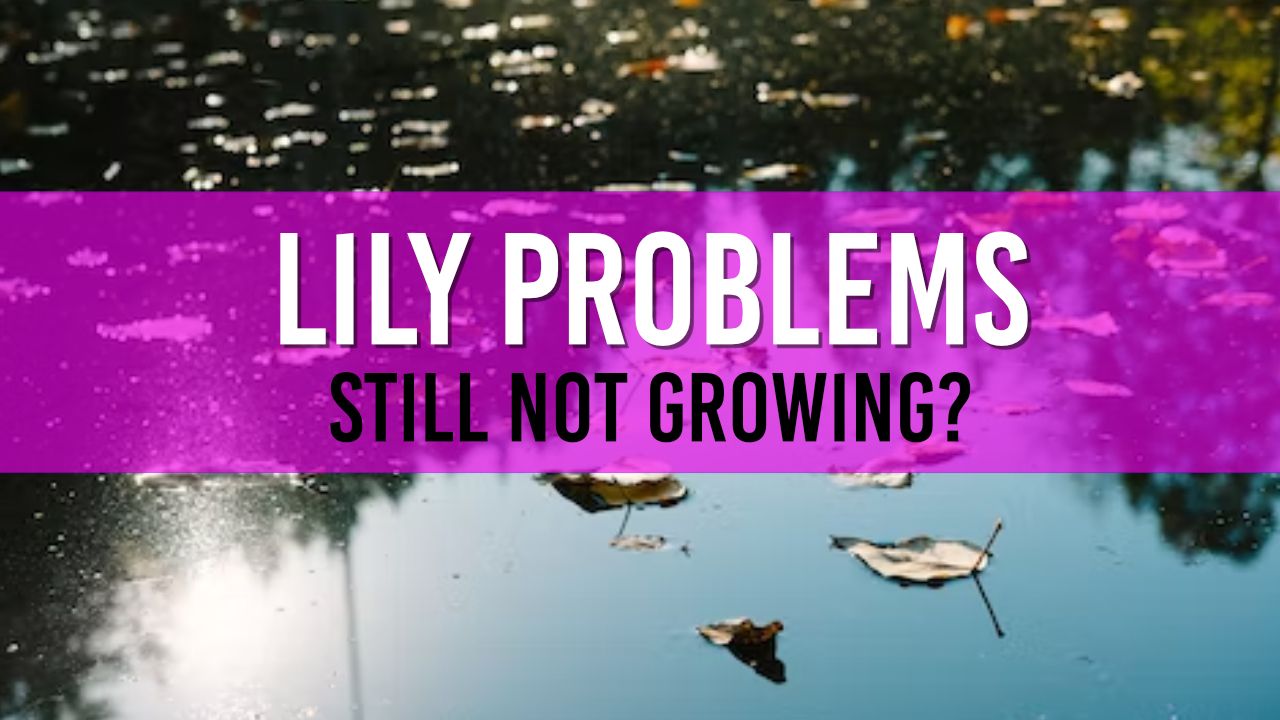Why are my Lilies not growing?
Pond Lilies require good amounts of sunlight, good water quality that is filled with nutrients - or you may have planted them at the wrong depth in your pond. In this article I go over each reason in more detail.

Table of Contents
If you have been taking care of your garden pond and noticed that your lilies are not growing as they should, it can be quite disheartening. Water lilies are beautiful aquatic plants that add life and color to your pond, and it's essential to understand why they might not be thriving. In this article, I will provide some common reasons why lilies may not grow and offer solutions to improve their growth.
Inadequate Sunlight
Water lilies need at least six hours of direct sunlight daily to grow properly. If your pond is located in a shaded area or surrounded by tall trees, it may not receive enough sunlight for the lilies to grow. Consider trimming back any trees or shrubs that might be blocking sunlight, or relocate your pond if possible.
Poor Water Quality
Maintaining a clean and healthy pond environment is crucial for the growth of water lilies. Poor water quality can hinder their growth, leading to yellow leaves or even death. Ensure your pond has proper filtration, and check the water regularly for any imbalances. You can learn more about maintaining your pond in our free 4-part guide on autumn pond preparations.
Insufficient Nutrients
Lilies require a nutrient-rich environment to grow. If your pond soil is lacking in nutrients, you may need to supplement with aquatic compost. It's essential to replace your aquatic compost regularly to ensure your lilies have the nutrients they need. Using normal soil instead of aquatic compost may not provide the necessary nutrients for your lilies to grow.
Inappropriate Planting Depth
Water lilies need to be planted at the correct depth for their specific variety. Planting them too deep or too shallow can lead to poor growth. Check the planting recommendations for your specific lily variety and adjust the planting depth if necessary.
Overcrowding
Water lilies need space to grow, and overcrowding can inhibit their growth. Ensure there is enough room in your pond for the lilies to spread out and grow. If you have too many lilies, consider thinning them out or relocating them to another pond or water feature.
Pests and Diseases
Pests and diseases can also affect the growth of your lilies. Inspect the leaves and roots for signs of damage and treat any issues accordingly. You can learn more about common pond pests and how to manage them on our pests page.
Temperature Fluctuations
Extreme temperature fluctuations can also negatively impact the growth of water lilies. Ensure your pond has a consistent temperature, especially during the winter months. Installing a pond heater can help maintain a stable temperature in your pond.
Final Thoughts
In conclusion, several factors can contribute to the lack of growth in your water lilies. By addressing these issues and providing a healthy pond environment, your lilies should start to flourish. For more information on pond care and maintenance, visit PondAnswers.com.

